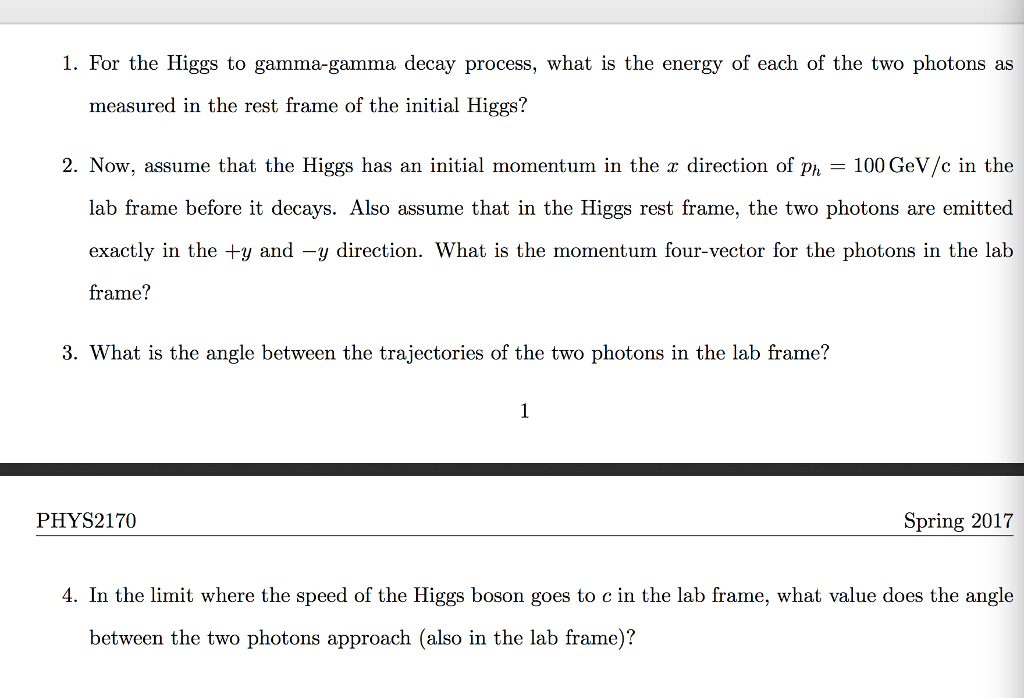The Higgs boson, often referred to as the “God particle,” occupies a pivotal role in the Standard Model of particle physics. Its discovery in 2012 was not merely a scientific milestone; it was a solemn elucidation of how particles acquire mass. Like an artist revealing their masterpiece, the Higgs boson sheds light on the intricate tapestry of the universe, illustrating a profound relationship between energy, mass, and the very fabric of existence.
At the heart of the inquiry into how the Higgs boson gets its own mass lies the subtlety of spontaneous symmetry breaking. This concept can be likened to a perfectly symmetrical snowflake that suddenly falls and shatters into myriad fragments. The original symmetry is disrupted, leading to a new configuration—one where diverse forms arise from a single origin. In the boson’s case, the Higgs field permeates the universe, a pervasive energy field that remains unobserved yet fundamental to particle mass.
The Higgs field, a scalar field unlike others that possess intrinsic vectorial attributes, reverberates throughout the cosmos. When other elementary particles traverse this field, they experience a type of friction akin to moving through a thick syrup. This interaction with the Higgs field endows particles with mass. Yet, the Higgs boson itself, being an excitation of this field, also feels this friction. This interaction results in what might be called a self-interaction. The boson does not exist in isolation; instead, it is a dynamic participant in the tapestry of mass acquisition.
To delve deeper, one must tread into the enigmatic world of symmetry and its breaking. Fundamental particles, such as electrons and quarks, are born from the energy of the universe itself. According to Einstein’s fabled equation, E=mc², energy and mass are inextricably linked. However, before the universe cooled after the Big Bang, all particles were massless, allowing them to roam freely at the speed of light. As the cosmos evolved, the Higgs field emerged, engendering the fascinating phase transition that granted these particles their characteristically diverse masses. In this respect, the Higgs boson acted as both the architect and the arbiter of mass. Where there was once a chaotic energy landscape, an ordered structure began to emerge, with particles obtaining their identities.
The mechanism of exchanging virtual particles looms large in understanding mass. In quantum field theory, particles are not merely manifest entities; they are interlaced with a web of interactions. Within this framework, the Higgs boson emerges as a crucial agent. It is here that the Higgs field weaves its intricate threads: while particles gain mass through the Higgs field’s interaction, the self-mass of the Higgs boson itself underscores its role in this cosmological narrative. Each interaction is a thread binding the fabric of reality. The Higgs boson, conferred with mass through its own self-interaction, dances an intricate ballet with other particles, all whilst maintaining the symmetry of the universe.
Moreover, the symmetry-breaking mechanism through which the Higgs boson acquires mass also raises questions about the specifics of the interactions within this field. The quantum dynamics of the Higgs field can be visualized as lifeworlds of particles traversing a landscape full of energy valleys. When particles reach the troughs, they find themselves weighed down with mass, a beautiful and tragic consequence of the universe’s inherent laws. This gravitational metaphor extends to the Higgs boson. Understanding how it acquires mass demands an appreciation of the landscape that the Higgs field represents. Its own mass relative to other particles hints at a nuanced relation that is not merely additive but fundamentally relational within the cosmos.
The exploration of mass not only anchors the inquiry into the Higgs boson but also beckons one to ponder the future of this field. Researchers continue to test the boundaries of the Higgs field, seeking to delve into its more profound implications. Is there a possibility of discovering other scalar or even vector fields? And what might they reveal about our universe? The unanswered questions linger like an unplayed note in a symphony, inviting intellectual curiosity and experimentation.
In conclusion, the question of how the Higgs boson procured its own mass intertwines itself with the grand narrative of particle physics and cosmology. Through the lens of spontaneous symmetry breaking, one sees a universe that is as much about the interplay of energies as it is about the particles themselves. The Higgs boson, a catalyst in the mass-acquisition process, embodies the elegant interplay of structure and chaos inherent in nature’s design. Just as a painter’s brush strokes create a vivid tableau, the processes at play in quantum field dynamics unfold a compelling saga. The Higgs boson is not merely a particle, but a crucial storyteller in the cosmic narrative of existence, inviting ongoing inquiry and contemplation about the nature of mass and the universe itself.












